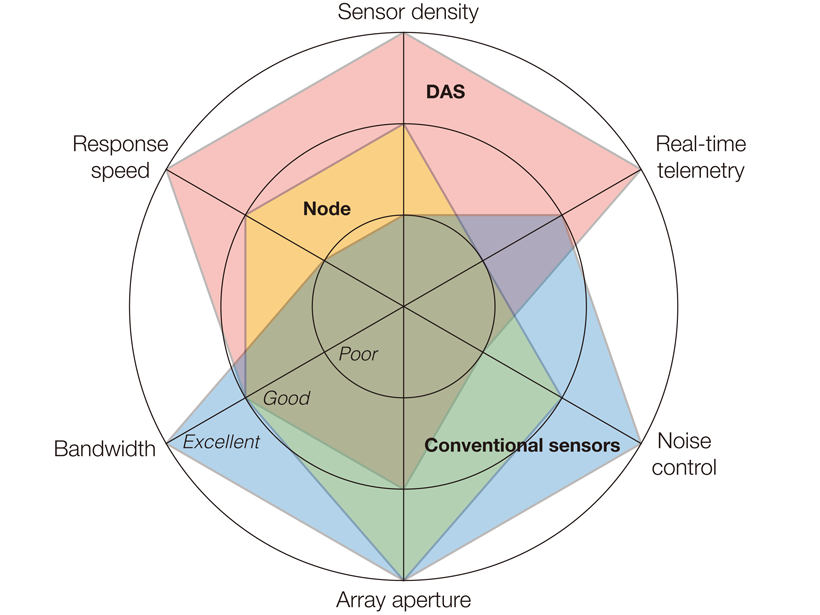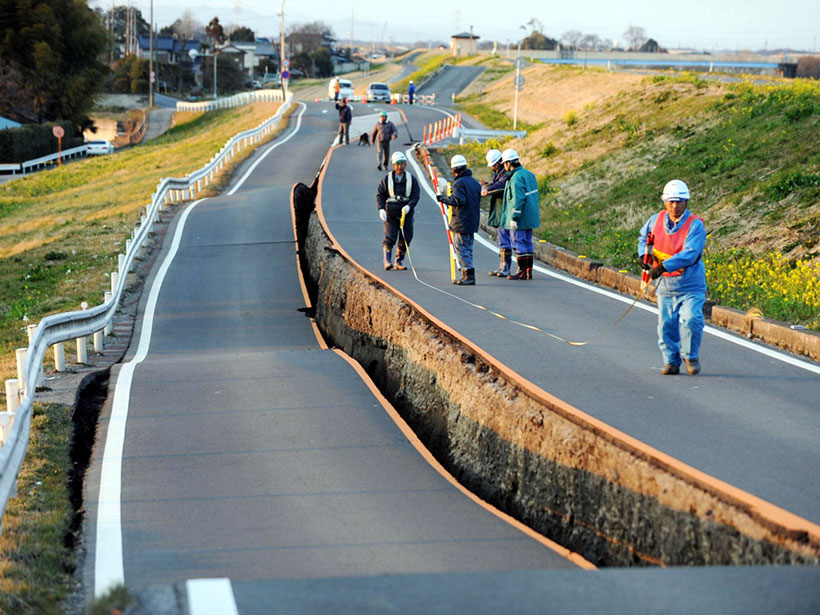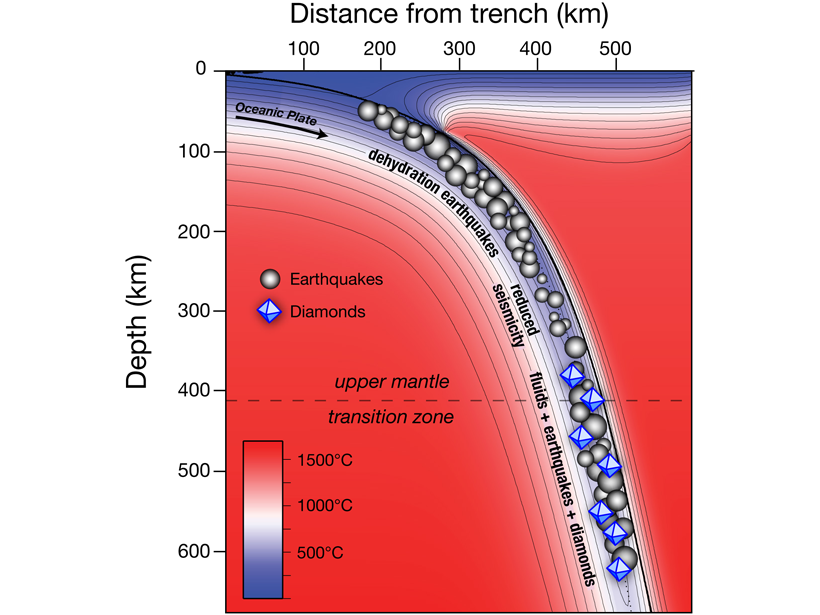Why does low-frequency energy come from the shallow part of ruptures, and the high frequencies from deep?
earthquakes
A New Method Produces Improved Surface Strain Rate Maps
The transdimensional Bayesian approach handles GPS data limitations better than existing methods and may assist future seismic hazard assessment studies.
Tiny Kinks Record Ancient Quakes
As Earth ruptures, micas kink. These kink bands hide in rocks millions of years old, preserving evidence of past quakes.
Good, Soon, and Cheap – Earthquake Early Warning by Smartphone
Fixed smartphone networks can provide robust early warning of earthquakes at far lower costs than traditional scientific arrays, which is an important consideration for regions with limited resources.
Aftershocks and Fiber Optics
Internet cables can be transformed into a string of dense seismic sensors, and this approach has now been shown to be highly useful for quickly monitoring seismicity after major earthquakes.
Learning from a Disastrous Megathrust Earthquake
Ten years of interdisciplinary studies since the disastrous Tohoku-oki earthquake have improved our knowledge of earthquake-cycle processes and hazard, but prediction of such events remains elusive.
A New Approach to Calculate Earthquake Slip Distributions
A transdimensional, probabilistic approach is more flexible than traditional least squares fits and provides better handling of sharply varying slip distributions.
Earthquake Rupture Solution is Up in the Air
Perhaps the most complex earthquake rupture ever studied is further constrained by signals from Earth’s ionosphere.
Diamonds Are at Fault
Deep-seated earthquakes in subduction zones are related to diamond formation.
High School Junior Builds Cheap Earthquake Warning Device
The project exploring seismic noise during the coronavirus pandemic was fueled by Google searches and bathroom soldering sessions.










